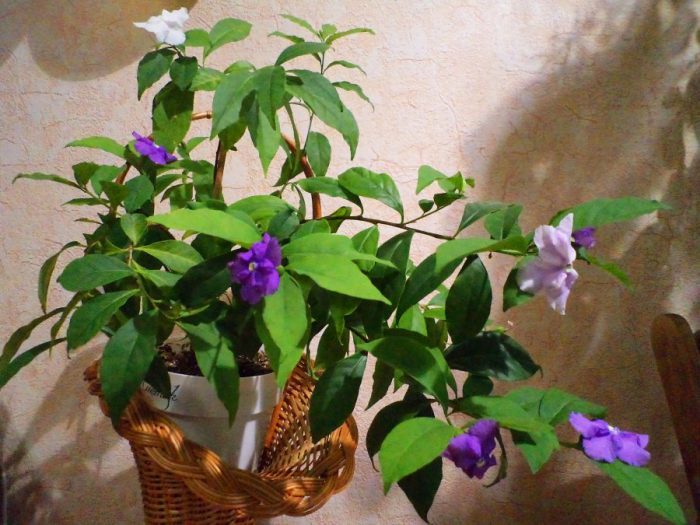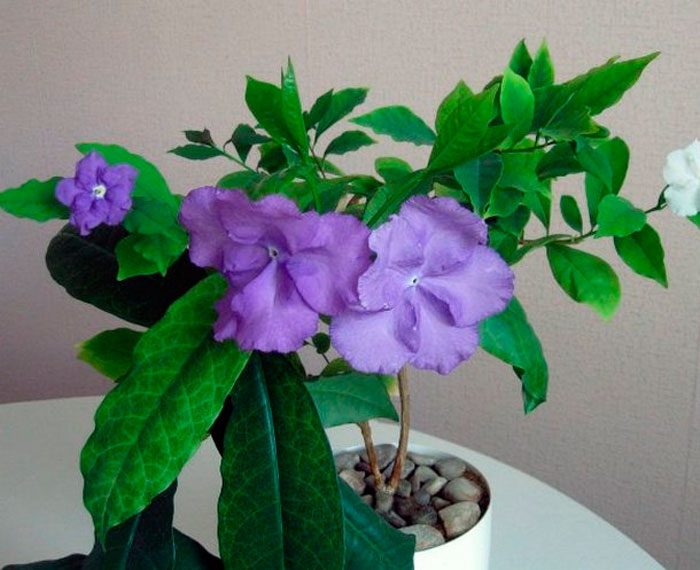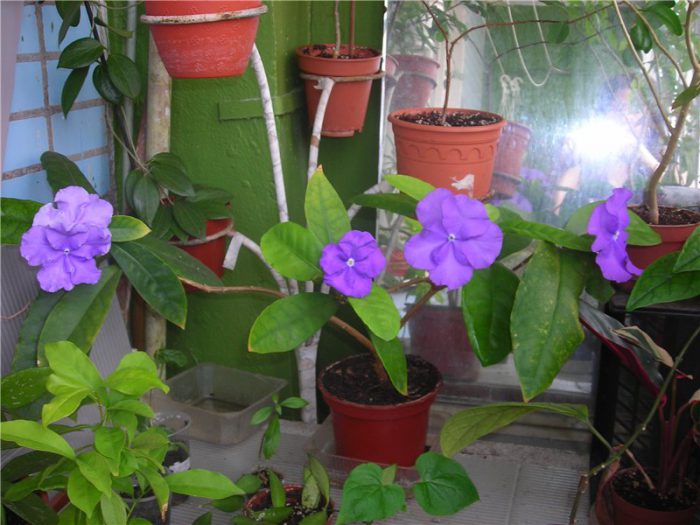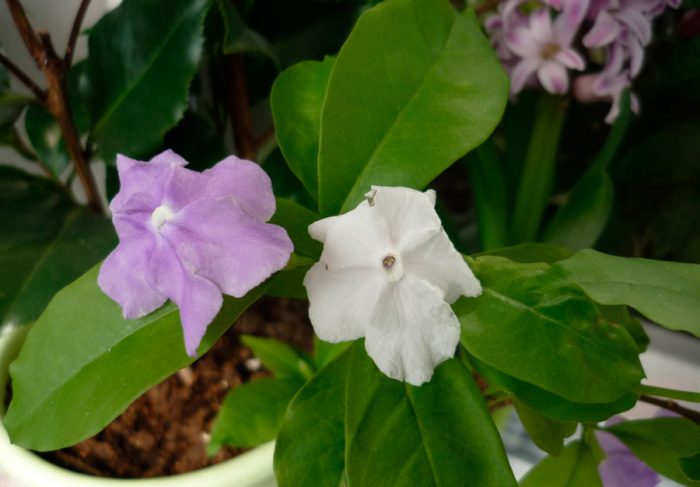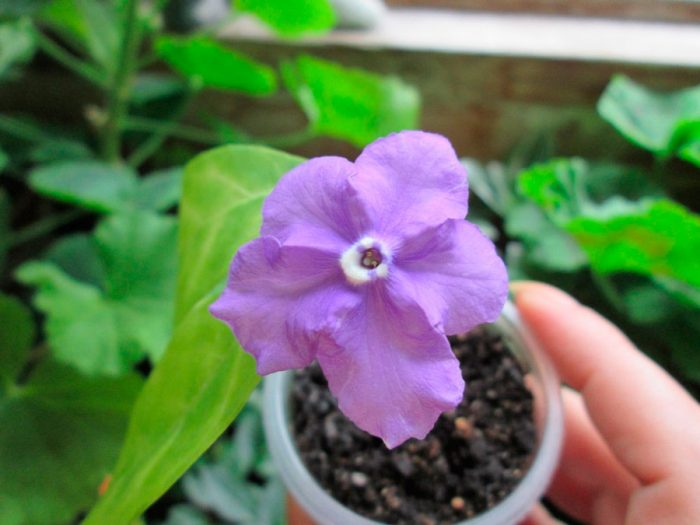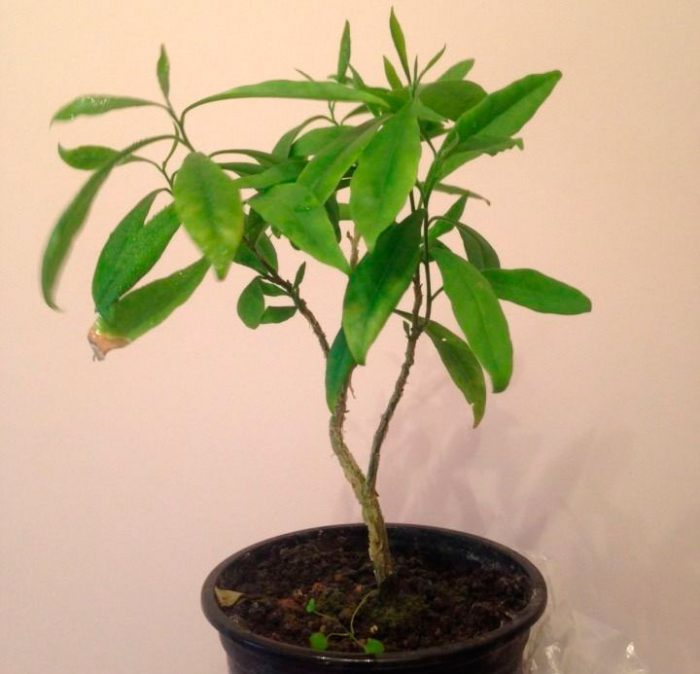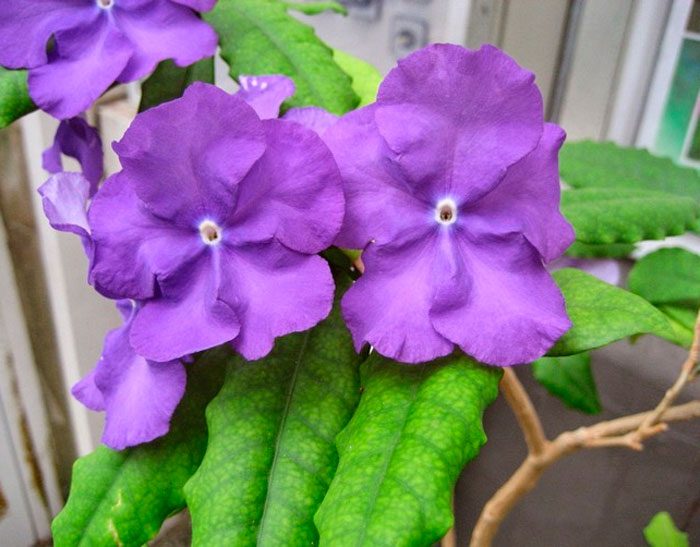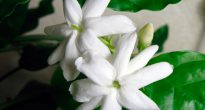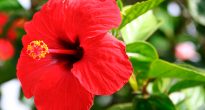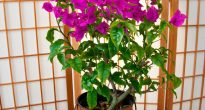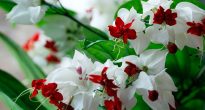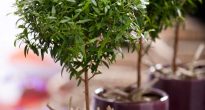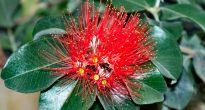Brunfelsia is a prominent representative of the Solanaceae family. Its distinctive feature is a delicate, exquisite aroma that is not inferior to an expensive perfume. The homeland of the fragrant beauty is the Antilles. It grows wild in South America. In natural conditions, it reaches a size of about 3 meters, but it grows very slowly. Indoor brunfelsia is a compact bush up to 50 cm in size. The leaves of the bush are long, dull, dark green in color. Inflorescences come in different colors - white, purple, lavender. There are plants with color-changing inflorescences.
The name of the amazing flower was given by the famous scientist Karl Linnaeus in honor of his colleague, whose name was Brunfels Otto. Many other popular names for the flower are known. One of them is manaka. There was once a girl named Manaka. Brunfelsia was her favorite flower, because she used it to prepare a remedy that relieves unrequited love. And this is no coincidence. The extract of the plant has a psychotropic effect. The flower is considered a "sacred herb" by many shamans and sorcerers. It gives off a pleasant smell after sunset.
Content
Brunfelsia care at home
In indoor conditions, you can grow one plant variety - small-flowered brunfelsia. There are also subspecies that are similar in color and shape of flowers. Brunfelsia has large flowers of various colors. It begins to bloom in early spring. The flowering period ends in late autumn. The lifespan of an individual flower is short - 2-3 days. New flowers are constantly blooming, so it seems that it blooms continuously. During flowering, the shrub looks great, covered with fragrant, bright purple flowers.
Brunfelsia will brighten up any dark corner of the room. It grows well in the shade. It will delight you not only with its excellent aroma, but also with lush flowering.
Place for a flower
It is best to place the brunfelsia on a shady windowsill. She loves the scattered rays of the sun. But in cloudy weather, the leaves of the beauty will be pale and it will not bloom magnificently. The plant can get sunburn from bright light. In this case, the plant must be shaded with a light cloth. He will be most comfortable on a window located in the east or southeast. With the right lighting, the brunfelsia bloom will be spectacular, and the foliage will be fleshy and bright.
Brunfelsia is a tall plant. For normal growth and development, she needs free space. In summer, the purple beauty can be taken out onto the balcony.But a hot place doesn't suit her. It will not die from the heat, but it will bloom later. The plant needs to be sprayed more than watered.
Temperature and humidity
Brunfelsia is a tropical flower that loves humid climates. The ideal temperature for its maintenance is 12-15 ºС. During the period of intensive growth, the culture is provided with a temperature of 20-22 ºС. With the onset of autumn, the indicators are reduced to 9-14 ° C, so that buds are formed in time. The low room temperature should remain for about 8-12 weeks. Then it is gradually increased. The plant needs constant spraying if grown at home. When brunfelsia blooms, spraying is stopped. The fragrant beauty is placed on a pallet of wet gravel. It is equally important to ventilate the room where the beautiful flower is located.
Watering
Brunfelsia is a moisture-loving plant. It should be watered regularly, using soft water (settled or rainwater) for irrigation. The watering fluid needs to be slightly acidified, as the fragrant flower prefers acidic soils. During flowering, the plant is watered twice a week. In the cold season, watering is reduced to once. Do not allow water to stagnate in the pan. It needs to be drained. Waterlogging of the soil leads to root rot. If the earthy ball dries up, the plant will drop flowers and buds.
Top dressing
Regular feeding will help stimulate the brunfelsia bloom. Complex mineral fertilizers are used as top dressing. Fertilize the flower 2-4 times a month.
Pruning
Brunfelsia fades at the end of February. After that, the plant is pruned, forming a future bush. If this moment is missed, the shrub will be greatly extended in length. Pruning promotes the formation of new new shoots. Compliance with optimal conditions of detention is the key to re-flowering. The shrub will be compact and tidy.
After flowering, a fragrant flower must be provided with peace. The bush should rest for 2-3 months. The room temperature should be between 10-15 ° C.
Reproduction
There are several ways to breed brunfelsia. New offspring can be obtained using cuttings and lignified and semi-lignified cuttings. Seed propagation is also practiced. But this method has its own nuances.
A wet mixture of perlite and peat is used to root the shoots. The room temperature should not drop below 25 degrees. Rooting is best done in summer. Young seedlings need to be pinched. When new specimens of brunfelsia are obtained by the seed method, seedlings are grown in a mini-greenhouse in a substrate of peat and sand. The procedure can be performed from December to April.
Transfer
The exotic beauty should be replanted after flowering. Young specimens need regular transplantation. Mature plants are transplanted every year. But the top layer of the earth should be renewed annually. Brunfelsia will grow well in a fertile, neutral substrate. The soil should be nutritious, friable, water and air permeable. The soil mixture should consist of leaf, garden soil and river sand (proportion 2: 2: 1). Peat in this substrate also does not hurt. Sandy soil made for flowering plants is also suitable. For planting, it is best to choose a medium-sized pot. Don't forget about the good drainage holes in the bottom of the pot. Clay cuttings or pieces of expanded clay are placed at the bottom of the container.
Pests
The main pests of Brunfelsia are scale insects. These bloodthirsty insects suck out the cell sap of the bush. This leads to wilting of leaves and flowers. They become pale and gradually fall off. Unfortunately, the pest cannot be removed mechanically. To combat the scabbard, insecticides are used.
Sluggish leaves indicate the defeat of the plant by a spider mite. If there is a cobweb on a bright flower in internodes on the stem, a tick has wound up there.To get rid of it, the petals should be washed with a soapy sponge and the beauty should be given a warm shower. If a pest appears on the shrub during flowering, it is not necessary to spray it. With a strong tick lesion, brunfelsia is treated with actellik's solution.
In some cases, aphids can threaten a beautiful flower, whitefly, mealybug... If grown in a garden, slugs and snails can attack the attractive shrub. In this case, it is treated with special means.
Brunfelsia is a capricious and wayward plant that gives owners a lot of trouble. But beautiful flowers of the original shape will make you forget about all the problems. It should be remembered that the flower is poisonous. When caring for it, you must follow the precautions. The most dangerous are the fruits of the plant. They look like small orange tomatoes. You cannot take them into your mouth.

